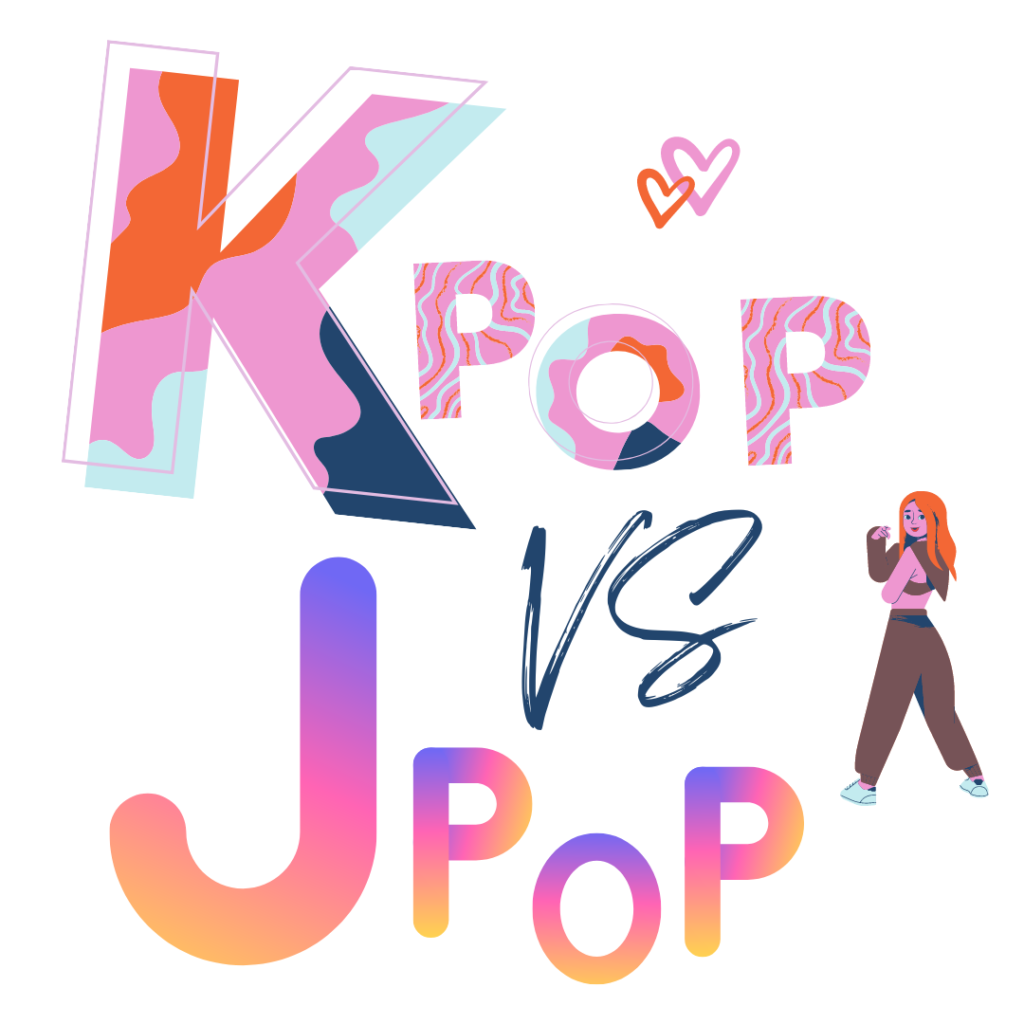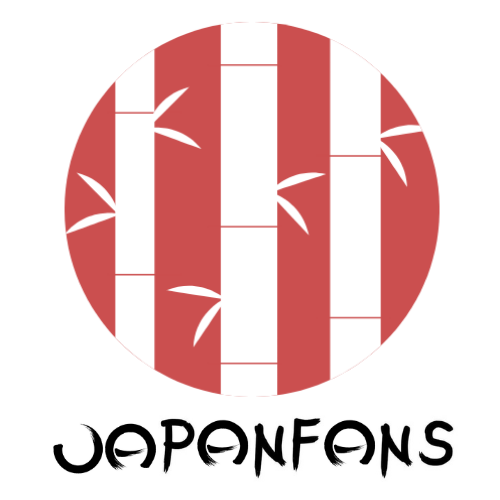K-Pop vs. J-Pop, this blog post explores the vibrant worlds of Korean and Japanese pop music. Join us as we embark on a musical journey!
The global music scene has been captivated by the infectious melodies, dynamic choreography, and dedicated fan bases of both K-Pop (Korean Pop) and J-Pop (Japanese Pop). Originating from South Korea and Japan, respectively, these genres have gained immense popularity worldwide. In this blog post, we’ll delve into the similarities and differences between K-Pop and J-Pop, shedding light on their unique characteristics, cultural influences, and global impact.
K-pop vs. J-pop, Cultural Background and Influences
K-Pop: K-Pop draws inspiration from a fusion of musical styles, incorporating elements of pop, hip-hop, R&B, electronic, and traditional Korean music (gugak). It embraces Korean cultural values, aesthetics, and fashion trends, resulting in a vibrant and visually captivating experience.
J-Pop: J-Pop represents the modern pop music of Japan, blending diverse genres such as pop-rock, electronic, and traditional Japanese music (enka). The genre often reflects the distinct Japanese cultural nuances, fashion trends, and societal themes.
Global Reach and Fan Base
K-Pop: K-Pop has experienced explosive international growth over the past decade, captivating fans worldwide. Thanks to the widespread use of social media platforms and streaming services, K-Pop groups like BTS, Blackpink, and EXO have amassed massive fan bases, transcending language and cultural barriers.
J-Pop: While J-Pop has a more localized fan base, it still enjoys a considerable international following. Artists such as Arashi, AKB48, and Perfume have garnered a dedicated fan base, particularly in Asia. J-Pop’s influence can also be seen in anime soundtracks, which have gained popularity globally.
Training and Production Systems
K-Pop: K-Pop agencies follow a rigorous and intensive training system, grooming aspiring artists in singing, dancing, acting, and foreign languages. These trainees undergo years of training before debuting in carefully curated groups. K-Pop companies focus on creating polished and synchronized performances, leading to the industry’s reputation for high-quality music videos and live shows.
J-Pop: While J-Pop also relies on talent agencies, the training system is relatively less intensive. Many J-Pop artists begin their careers as idols, appearing in television shows and performing in groups. The focus in J-Pop is often on individuality and expressing the unique personalities of the artists.
Musical Styles and Production
K-Pop: K-Pop songs often feature catchy hooks, powerful choreography, and impressive vocal performances. The production values are high, with emphasis on meticulously crafted music videos and synchronized dance routines. Collaborations with renowned international songwriters and producers have further broadened K-Pop’s musical influences.
J-Pop: J-Pop songs range from upbeat and energetic to emotional ballads, showcasing versatility in musical styles. The genre places importance on melodic arrangements and often incorporates elements of traditional Japanese instruments. J-Pop artists actively participate in songwriting, resulting in a more personalized approach to their music.
K-Pop vs. J-Pop Fashion and Aesthetics
K-Pop: K-Pop is renowned for its bold and trendsetting fashion choices. Artists often experiment with vibrant colors, avant-garde styles, and unique stage outfits. Fashion plays a crucial role in K-Pop’s visual identity, contributing to its global appeal and influencing international fashion trends.
J-Pop: J-Pop fashion is characterized by a blend of cute and edgy aesthetics. Artists may incorporate elements of cosplay, anime-inspired outfits, and fashion subcultures like Lolita and Visual Kei. J-Pop idols are seen as fashion icons, and their styles often inspire fans within Japan and beyond.

K-pop Examples
Here are some Korean examples that showcase catchy hooks, powerful choreography, and impressive vocal performances in K-Pop:
- Catchy Hooks:
- “Gangnam Style” by Psy: This iconic song became a global sensation with its addictive hook and energetic dance moves, propelling K-Pop into the international spotlight.
- “Ddu-Du Ddu-Du” by Blackpink: Known for its infectious chorus and bold sound, this song showcases Blackpink’s fierce charisma and catchy melodies.
- Powerful Choreography:
- “Fire” by BTS: This high-energy track features dynamic choreography that perfectly synchronizes with the song’s intense beats, highlighting BTS’s exceptional dancing skills.
- “TT” by TWICE: With its adorable yet precise choreography, TWICE’s “TT” captivated fans with its catchy moves and memorable gestures.
- Impressive Vocal Performances:
- “Spring Day” by BTS: Known for their emotive vocals, BTS delivers powerful performances in “Spring Day,” a heartfelt ballad that showcases their vocal range and emotional depth.
- “Monster” by EXO: This song highlights EXO’s impressive vocal harmonies and showcases their ability to deliver strong and smooth vocal performances.
These examples represent just a glimpse of the diverse range of K-Pop songs that exhibit catchy hooks, powerful choreography, and impressive vocal performances. The K-Pop industry consistently produces music that pushes boundaries and captivates listeners with its innovative approach to entertainment.
J-pop Examples
Here are some examples of J-Pop songs that demonstrate versatility in musical styles, from upbeat and energetic tracks to emotional ballads, while incorporating melodic arrangements and elements of traditional Japanese instruments:
- Upbeat and Energetic:
- “Pretender” by Official HIGE DANDism: This song blends catchy pop-rock elements with powerful vocals, showcasing the band’s energetic performance and melodic hooks.
- “Heavy Rotation” by AKB48: AKB48 is known for their lively and energetic performances. “Heavy Rotation” is a vibrant pop track that exemplifies their upbeat style and catchy melodies.
- Emotional Ballads:
- “Lemon” by Kenshi Yonezu: “Lemon” is a poignant ballad that gained massive popularity. It beautifully combines emotional lyrics, a melodic arrangement, and Kenshi Yonezu’s heartfelt vocals.
- “Hikarunara” by Goose house: This emotional ballad features soft and tender vocals accompanied by acoustic instruments, showcasing Goose house’s ability to create a heartfelt atmosphere.
- Versatility and Traditional Instruments:
- “Flamingo” by Kenshi Yonezu: This track seamlessly blends electronic elements with traditional Japanese instrumentals, creating a unique and dynamic sound.
- “Hana” by ORβIT: ORβIT’s “Hana” incorporates traditional Japanese instruments, such as the koto and shamisen, into a modern pop song, showcasing the fusion of traditional and contemporary sounds.
J-Pop artists continuously experiment with different musical styles and draw inspiration from traditional Japanese music, infusing their songs with melodic arrangements and incorporating traditional instruments to create a distinctive sound that resonates with listeners.
These examples highlight the versatility and range of J-Pop, from energetic tracks to emotional ballads, while incorporating melodic arrangements and traditional Japanese elements. The genre’s ability to seamlessly fuse different styles and showcase traditional instruments adds depth and uniqueness to its musical landscape.
K-Pop vs. J-Pop Conclusion
K-Pop and J-Pop have both carved their unique paths in the global music industry, captivating millions of fans worldwide. While K-Pop enjoys broader international recognition, J-Pop maintains a devoted fan base and cultural significance in Japan. Both genres showcase distinctive cultural influences, training systems, musical styles, and fashion aesthetics, making them indispensable components of the global pop music landscape.
Whether you find yourself captivated by the infectious beats of K-Pop or the melodic charm of J-Pop, these genres continue to evolve, leaving an indelible mark on the world stage, connecting fans from diverse backgrounds through the power of music.
More…?
Who are your favourite J-pop and K-pop artists? Do you go to concerts and events (like Heroes Made in Asia) to sing & dance? Do you also like T-pop and C-pop? Let’s discuss this and more in our Facebook groups: Japan Fans, Korea Fans and China Fans.
